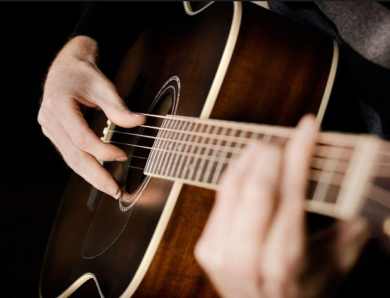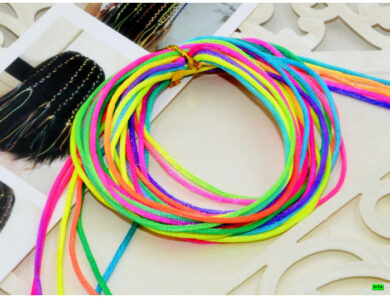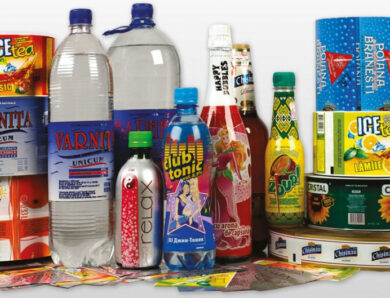How to decipher badges for washing clothes
Many housewives prefer to ignore labels and stickers, present on clothes. And in vain. They are placed there for a reason. Such markings are intended to tell the buyer exactly how to take care of the purchased items. Adherence to the manufacturer's recommendations is a guarantee, that favorite lingerie, dresses or jeans will serve you faithfully for a long time.
So it's time to carefully examine the labels. Some notations may not be very clear at first glance, and others need no explanation at all. What do the pictures mean?, located on the labels, how to understand their meaning and not be mistaken?
types of designations
It is worth considering, that image, located on the labels of things from different brands may not match. But most often they are related to washing modes, t? C leads, methods of bleaching. All characters, depending on, what they mean, you can divide such groups:
- washing;
- drying and wringing;
- ironing;
- bleaching;
- cleaning.
Let's take a closer look at the signs for washing clothes and decipher the symbols, located on things.
General rules
Badges, located on the tags, generally, easy to understand. Washing modes are marked with a "basin", representing an inverted trapezoid. Ironing looks like an iron, drying modes are indicated by a square, and cleaning - a triangle. If any icon is crossed out, this means, that the action is prohibited. Badges, underlined by one line, talk about it, that you should apply a gentle mode, and two - especially delicate.
Washing
As already mentioned, "basin" is used to denote the washing process, and the temperature is indicated by numbers, or points. Not every thing can be turned in the washing machine at maximum power. Example, washing a down jacket is not an easy task. If you do not carefully study the labeling, you can permanently ruin a thing.
| marking | transcript |
| |
Washing is allowed or prohibited, respectively. |
| |
It is possible to wash only in a delicate or especially delicate mode, at minimum speed. Sometimes the temperature is additionally inscribed in the "basin", exceed which is not recommended. |
| |
The use of any type of washing machine is prohibited. |
| |
The product provides only hand washing, at t? C is not higher 40 ° C, machine washing is prohibited. |
| |
Linen can be washed at t? = 95? WITH, and even boil if necessary. Which mode to choose is up to you. |
| |
The thing can be washed at t? = 60 ?, 50 ?, 40 ?, 30? C respectively. |
| |
You can wash by hand, and in the machine at room temperature 30 ° C, 40 ° C and above 60? C respectively. |
| |
Do not use temperatures above 40 ° C, you need to use neutral detergents. |
| |
Whiteness, having such a designation on the label, it is strictly forbidden to squeeze, a, more precisely, unscrew as by hand, and with the use of a washing machine. |
Drying and wringing
There are also special designations for these processes. Drying, example, down jacket is radically different from drying a towel. In order not to spoil the fabric, you should study the label beforehand.
| marking | transcript |
| |
This icon indicates the possibility or impossibility of drying in principle. |
| |
Such symbols determine the temperature regime of the allowed drying. The more dots, the higher the t? C can be used. |
| |
It is possible / do not dry or wring the fabric in a drum-type washing machine. |
| |
It is recommended to dry the thing, spread out on a flat surface. |
| |
You can squeeze this fabric, and it is necessary to dry by all means in a vertical condition. |
| |
Such a thing can be dried, hanging on a rope. |
| |
The fabric should not be exposed to direct sunlight. Shadow drying is provided. Linen must be turned inside out before drying. |
| |
Such badges instruct to dry the product vertically or horizontally without prior wringing. |
ironing
If washed in a washing machine, many products are normally tolerated, not every fabric is able to withstand the effects of high temperatures. If ironing, example, down jacket you will not follow the instructions, you can overdo the temperature and just burn a pretty expensive thing. Therefore, such designations are extremely important for every housewife.
| marking | transcript |
| Symbols of this kind indicate the possibility of using an iron. Second, as you understand, means "Ironing is prohibited". | |
| Dotted icons mean that the product can be ironed, you just need to follow the temperature regime. More points - higher temperature. In this case, it 200? WITH, 130 ° C and 110 ° C, respectively. | |
| |
You can iron the product, but the temperature of the iron should not exceed 140 ° C. |
| |
When you see this mark on the label of your clothes - turn off the steaming function. Excessive moisture and hot steam can damage the thing. |
bleaching
Symbols, relating to bleaching, compared to others not much.
| marking | transcript |
| This icon allows or disables whitening. | |
| These characters allow / prohibit the use of various bleaches, containing chlorine. | |
| Apply bleach, containing chlorine, not allowed. But bleaching with other substances is allowed. |
Fraction
Unfortunately, not all dirt can be removed with a regular washing machine. Sometimes you have to resort to dry cleaning services. Here, too, have their own rules. Table, located below, will save you from ill-considered decisions.
| marking | transcript |
| This symbol, located on things, signals that they can be cleaned using any known solvents. | |
| Such badges refer to dry cleaning of the product. The first allows it, the second - forbids. | |
| These designations refer to the use in cleaning of substances such as monofluorochloromethane and perchlorethylene. The first icon allows the use of these substances, and the second indicates the need for a relaxed regime: limited water use and temperature control, inadmissibility of mechanical impact. | |
| Such recommendations are dry cleaning with treatment with hydrocarbons and trifluorotrichloromethane. The second picture means the same thing, only with the use of light mode. What is meant can be seen above. | |
| |
The product must be cleaned with care, the stability of not all solvents is observed. |
| |
The item should not be cleaned with any chemicals. |
| These symbols refer to wet cleaning of the fabric, allow or forbid it. | |
| This marking involves delicate or very delicate wet cleaning of the fabric. It is worth paying special attention to humidity, t? C and machining. |
Letters on labels
Inscriptions on some labels may contain more than just pictures, but also letters. They show what fabric the product is made of and how to properly care for it.
| marking | Russian name | transcript |
| AC | acetate fiber | Items made of this fabric can be washed and ironed at medium and high t ° C. |
| WITH | acrylic | Able to withstand high t ° C. |
| CO | cotton | High temperatures are allowed, and monochromatic even boil. |
| THE | elastane | Only low t? C and gentle mode. |
| AT THE | linen | Care of average t ° C. |
| MD | Modal | Processing with use of average and high temperature mode is possible. |
| PA | Polyamide (Nylon) | Things from such fabric can be ironed and washed at average t ° C, do not boil. |
| PC | polyacrylic | Able to withstand high t ° C. |
| ON | polyester | Care at medium temperature. |
| I KNOW | silk | Extremely low t? C and minimal machining. |
| WE | viscose | For such fabric the average temperature mode is applied. |
| WHERE | Wool | Only low t ° C, do not rub, do not twist. |




